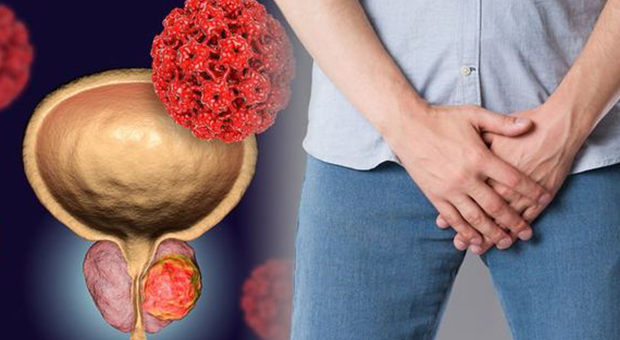
The diseases commonly affecting the prostate gland are:
- Benign prostate hyperplasia (BPH).
- Prostate cancer (CA of Prostate, Prostatic Adenocarcinoma).
- Prostatitis.
The Prostate Gland – A normal body gland
The prostate is a walnut-sized gland that forms part of the male reproductive system. The gland is made up of two lobes or regions enclosed by an outer layer of tissue. It is located in front of the rectum and just below the urinary bladder, which is the storage organ for urine. The prostate gland surrounds the urethra, the canal through which urine passes out of the body.
Symptoms that may indicate Prostate problems
Most of the symptoms of BPH arise from the obstruction of the urethra and gradual loss of bladder function, resulting in incomplete emptying of the bladder. The symptoms of BPH may vary and they can be described as irritative and obstructive symptoms of the lower urinary tract (LUTS).
The following are the symptoms:-
Obstructive Symptoms
- A weak Urinary Stream
- Difficulty in Passing Urine
- Hesitency in starting urination
- Interrupted stream of urine
- Blood in urine
- Sense of Incomplete voiding
Irritative Symptoms
- Frequent Urination
- Urgency (difficulty in postponing urination)
- Awakening frequently at night for urination
- Pain or burning while passing urine
- Dribbling of urine after urination
- Urge incontinence
Benign Prostatic Hyperplasia (BPH), Benign Prostatic Enlargement – An aging process
Benign Prostatic Hyperplasia (BPH) is not considered a disease but it is an aging process. As the age advances and hair turns grey, the prostate gland enlarges around the same time. The prostate gland continues to grow during most of a man’s life. However, it does not cause symptoms before 40 years of age. After 50 years of age, a man begins to complain of symptoms due to Benign Prostatic Hyperplasia (BPH). As the prostate gland enlarges, it presses against the urethra causing obstruction to the flow of urine. The bladder begins to contract even when it contains small amounts of urine, causing more frequent urination. The narrowing of the urethra and partial emptying of the bladder cause many of the problems associated with Benign Prostatic Hyperplasia (BPH).
Symptoms of BPH could be due to complications occurring secondary to neglecting the treatment of enlarged prostate.
These could be:-
- Recurrent Urinary Tract Infection (UTI)
- Bladder and / or Kidney damage
- Acute Retention of urine
- Chronic Retention of urine leading to kidney failure due to severe untreated back pressure changes
- Bladder Calculi secondary to obstruction by Benign Prostatic Hyperplasis (BPH).
The size of the enlarged prostate gland does not matter or correlate with the symptoms of benign enlargement of the prostate (BPH). One may have a very large prostate gland without much symptoms of obstructions (LUTS) whereas other men with even smaller gland may have great irritative as well as obstructive symptoms of outflow obstruction (LUTS).
Diagnosis of BPH / Prostate Disease
A patient of suspected prostate obstruction should be examined by Urologist (a specialist who deals and treats in the problems of urinary tract and the male reproductive system). The urologist will evaluate the symptoms and may order some basic investigations.
-
Digital rectal examination of prostate to look for size, consistency, and nodules in the prostate.
The urologist in his clinic does this examination. He inserts a gloved finger into the rectum and feels part of the prostate next to the rectum. This examination helps him to evaluate the size, consistency and nodules in the prostate. -
Routine Urine Analysis to look for urinary infection or presence of blood.
- Blood test, Prostate specific antigen (PSA).
PSA is the protein produced by the prostate glands or prostate cells and found in the blood. These levels generally elevated in the blood of men who have prostate cancer. However, PSA may also be elevated in severe urinary tract infection, prostate abscess, or large voluminous prostate gland. PSA levels can also be used for monitoring men with prostate cancer who have undergone treatment. Recently much remains debated about the interpretation of PSA levels.
- Ultrasonography of Abdomen and Pelvis with full Bladder and Post void residual urine.
The ultrasonography of the abdomen and pelvis is done to assess the any secondary pathology in the kidney, ureter and the bladder and also to measure the post void residual urine.
- Uroflowmetry:
One is asked to pass urine into a special commode which is connected to computerized device which measures the quantity and flow of urine. Reduced and obstructed flow will signify outflow obstruction secondary to BPH or stricture urethra.
Treatment of Benign prostate hyperplasia (BPH)
In early cases, the symptoms can sometimes disappear even without any treatment. During that period the patient will need some help and can be treated conservatively. They may be advised to do regular checkups with the urologists to detect earlier complications. However, if the symptoms increase and the condition begins to create a danger to patient’s health or causes a major inconvenience to his life style, the treatment is recommended. Benign prostate hyperplasia (BPH) can also be brought to light by the presence of Urinary Tract Infection (UTI), which generally is treated first.
There are various types of treatment available for the mild, moderate and severe Benign prostate hyperplasia (BPH):
- Mild BPH
- Moderate BPH
- Severe BPH
Conservative or Medical Treatment for BPH:
There has been a constant research to find a newer drug for the treatment of BPH. These drugs are either aimed at shrinking the prostate gland and/ or prevent the growth of the prostate or facilitate the passage of urine by relaxing the obstructed passage, which is been caused by BPH. FDA has approved a several drugs for treatment of BPH.
Surgical Treatment for Benign prostate hyperplasia (BPH):
Most of the urologists will recommend removal of the enlarged part of the prostate if drugs are not effective to relieve the symptoms.The gold standard for the surgical treatment for BPH is Trans Urethral Resection of Prostate (TURP). This treatment is offered to the patients with signs and symptoms of outflow obstruction / LUTS secondary to Benign prostate hyperplasia (BPH). In this surgery, only the enlarged tissue that is causing obstruction to the urethra is removed. This usually helps them in relieving the obstructions and other symptoms of Benign prostate hyperplasia (BPH).
Trans Urethral Resection of Prostate (TURP)
This surgery is generally performed under spinal / epidural anesthesia and there is no external incision or cut is required. The urologist passes a fine instrument through the urinary passage called urethra and reaches the prostate.
Trans Urethral Resection of Prostate (TURP) is the procedure done for the Benign prostate hyperplasia (BPH).
Trans urethral procedures are less traumatic than open surgery and require a much shorter recovery period. The patient can be discharged in 2-3 days time.
Some urologists sometimes may perform TUIP that is Trans Urethral incision of prostate for a smaller gland. They do not remove the tissue, as in case of Trans Urethral Resection of Prostate ( TURP), but simply make few cuts at the bladder neck.
Laser Surgery
Holmium lasers are used to enucleate obstructing prostate lobe. The doctor passes the laser fiber through the urethra into the prostate using a cystoscope and then delivers holmium laser. The laser energy cuts and coagulates the prostate tissue. Hence there is no bleeding,laser surgery requires anesthesia and a hospital stay. One advantage of laser surgery over Trans Urethral Resection of Prostate (TURP) is that laser surgery causes little blood loss and can be performed in patients taking blood thinner medications. Laser surgery also allows for a quicker recovery time.
Open surgery
In the few cases when a transurethral procedure cannot be used, open surgery, which requires an external incision, may be used. Open surgery is often done when the gland is greatly enlarged, when there are complicating factors, or when the bladder has been damaged and needs to be repaired. The location of the enlargement within the gland and the patient’s general health help the surgeon decide which of the three open procedures to use.
Prostate surgery
During this initial period of recovery at home, avoid much straining or exertion.
Here are some guidelines:
- Continue drinking a lot of water to flush the bladder.
- Avoid straining when having a bowel movement.
- Eat a balanced diet to prevent constipation. If constipation occurs, ask your doctor if you can take a laxative.
- Don’t do any heavy lifting.
- Don’t drive or operate machinery.
Prostate Cancer
Prostate cancer is common among American men. Your chance of getting prostate cancer may be affected by your:
- Age:
Men age 50 and older run a greater risk.
- Race:
Prostate cancer is most common among African-American men, followed by Hispanic and Native-American men. Asian-American men have the lowest rates of prostate cancer.
- Family history:
If your father or brother had prostate cancer, you are more likely to have it, too.
- Diet:
The risk of prostate cancer may be higher for men who eat high-fat diets.
- Obesity:
Recent studies have shown that men who are overweight or obese are at significantly higher risk for developing prostate cancer.
Diagnosing Prostate Cancer
To find out if prostate symptoms are caused by cancer, your doctor will ask about your past medical problems and your family’s medical history. Your doctor also will perform a physical exam. During the exam, your doctor will put a gloved finger into your rectum to examine your prostate to check for:
- The size, firmness, and texture of the prostate
- Any hard areas, lumps, or growth spreading beyond the prostate
- Any pain caused by touching or pressing on the prostate
You may be asked to give a urine sample for testing. Your doctor also may do a blood test to check the prostate-specific antigen (PSA) level. PSA levels can be high in men with an enlarged prostate gland or with prostate cancer. You may also need an ultrasound exam that takes computer pictures of the prostate.
If tests show that you might have cancer, your doctor will refer you to a specialist (a urologist) for a prostate biopsy. The doctor will take small tissue samples from several areas of the prostate gland to look for cancer cells.
Treating Prostate Cancer
Treatment for prostate cancer depends on whether cancer is in part or all of the prostate, or if it has spread to other parts of the body. It also depends on your age and overall health. Talk with your doctor about the best treatment choice for you and the possible side effects of treatment. You may want to ask another doctor for a second opinion.
Treatment for prostate cancer may be:
- Watchful waiting, also called active surveillance.
If the cancer is not causing problems, you may decide not to get treated right away. Instead, your doctor will check regularly for changes in your condition. Treatment will start if the cancer begins to grow.
- Surgery.
The most common type of surgery removes the whole prostate and some nearby tissue.
- Radiation therapy.
This treatment uses radiation to kill cancer cells and shrink tumors. The radiation may come from an x-ray machine or from tiny radioactive pellets placed inside or near the tumor.
- Hormone therapy.
Men having other treatments, like radiation therapy, also may be treated with drugs to stop the body from making testosterone. This is done if it seems likely that the cancer will come back. Hormone therapy also can be used for prostate cancer that has spread beyond the prostate.




